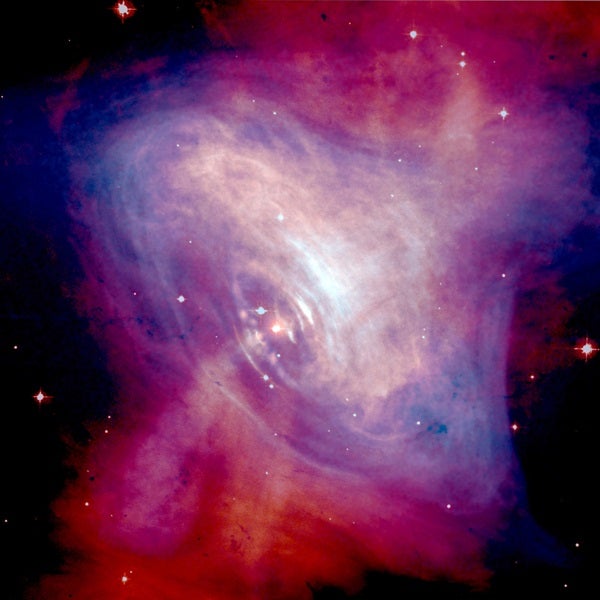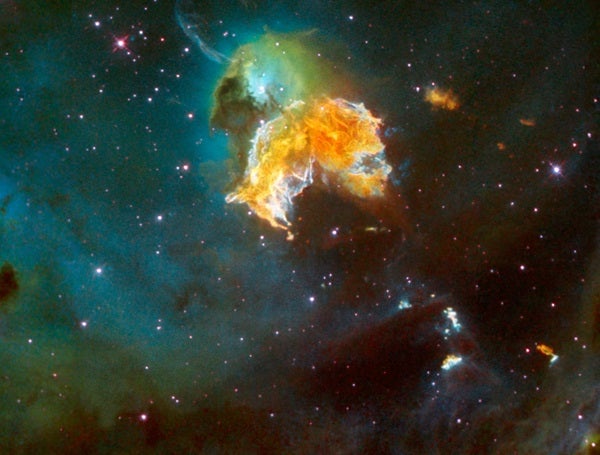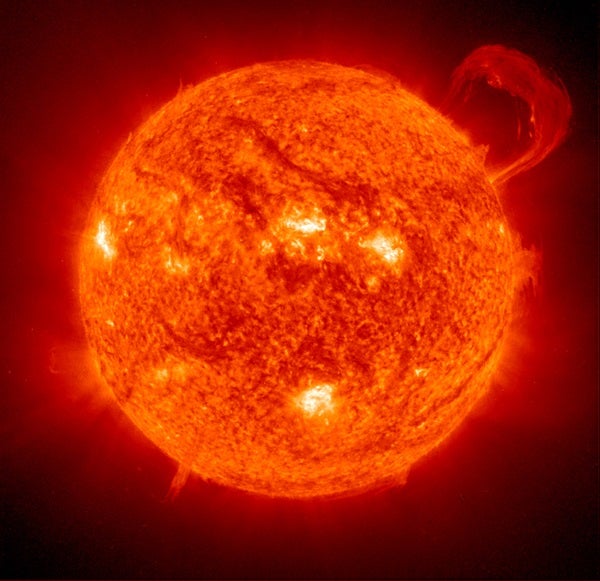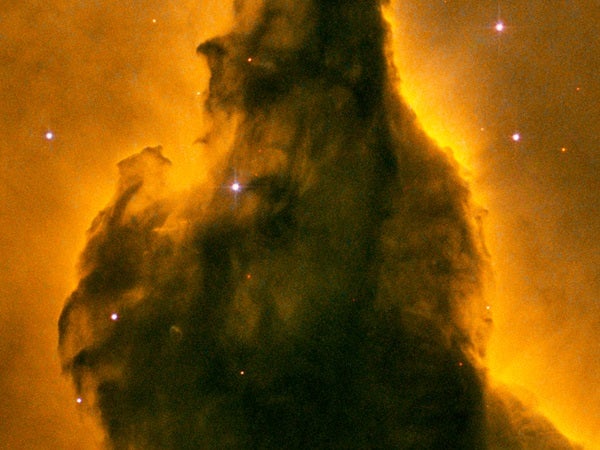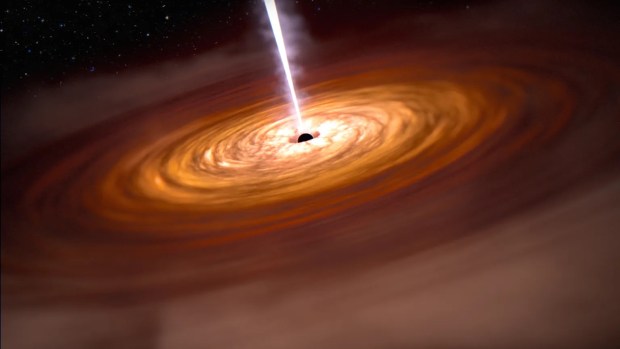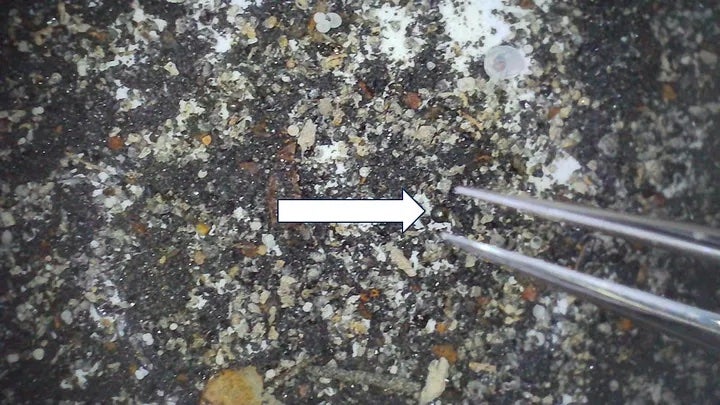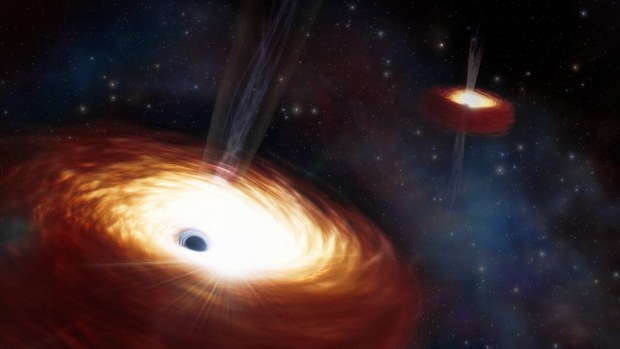After the discovery of radiation by French physicist Henri Becquerel in 1896, scientists believed atmospheric ionization (where an electron is stripped from an air molecule) occurred only from radioactive elements found in ground rocks or from radioactive gases. Austrian physicist Victor Hess found an additional source in 1912, when he strapped three electrometers into a balloon and measured atmospheric radiation at an altitude of about 15,000 feet (4,600 meters) during a total solar eclipse.
Physicists initially believed cosmic rays were gamma rays, high-energy radiation produced by radioactive decay. During the 1930s, however, experiments revealed that cosmic rays are mostly charged particles. In 1937, French physicist Pierre Auger (1899–1993) found that extensive particle showers (called air showers) occur when cosmic rays collide with particles high in the atmosphere, producing a cascade of electrons, positrons, photons, muons (particles similar to electrons but 200 times as massive), and other particles that reach Earth’s surface.
He found an ionization rate about four times greater than at ground level. Hess could explain the variant observations only if a powerful source of radiation were penetrating the atmosphere from above. Much later, in 1936, Hess received the Nobel Prize in physics for the discovery of what we now call cosmic rays.

Bringing the universe to your door. We’re excited to announce Astronomy magazine’s new Space and Beyond subscription box – a quarterly adventure, curated with an astronomy-themed collection in every box. Learn More >>.
In 1954, members of the Rossi Cosmic X-ray Group at the Massachusetts Institute of Technology in Cambridge made the first samplings of extensive air showers. The network of detectors at Harvard College Observatory produced much data on cosmic rays and their levels of energy.
Today in Argentina, the Pierre Auger Observatory is looking for extremely high-energy cosmic rays. This international project hopes to include a northern component in southeastern Colorado. The particles under detection have as much energy as a tennis ball traveling at 340 mph (550 km/h), packed into the space of a single proton. Physicists have nicknamed them “Oh-my-God particles.”
Aside from the Auger Observatory, other cosmic-ray research projects include the Telescope Array Project at the University of Utah; MARIACHI, a project of the National Science Foundation, Stony Brook University, and Brookhaven National Laboratory; and the HESS II detector in Namibia.
When the particles produced in air showers decay, three kinds of ghostly neutral-charged particles called neutrinos result. Because neutrinos so rarely interact with other matter, most pass through Earth undetected. But ambitious detector projects are searching for neutrinos produced by cosmic-ray showers. In 1998, the Super-Kamiokande detector in Japan found evidence of one type of neutrino changing into another “flavor.” And the IceCube detector, embedded in a cubic kilometer of ice at the South Pole, has found evidence of extremely high-energy neutrinos coming from outside the Milky Way.
By studying cosmic rays for several decades now, astronomers have begun to understand them. Astronomers categorize cosmic rays into four basic types. The first are those with low energies, called anomalous cosmic rays. They probably originate in the heliosheath, at the solar system’s edge, where the solar wind no longer has any effect. Astronomers believe anomalous cosmic rays occur when electrically neutral atoms in the heliosheath are ionized and accelerated. When the Voyager 1 spacecraft passed from the heliosheath into interstellar space in 2012, it detected significantly fewer anomalous cosmic rays and a huge increase in those from outside the solar system.
The second type, galactic cosmic rays, flows into the solar system from other parts of the Milky Way. In early 2013, astronomers announced confirmation that supernovae produce most cosmic rays of this type. In the aftermath of a supernova explosion, particles bounce repeatedly among the entangled magnetic fields within the gaseous remnant and accelerate into cosmic rays. At some critical point, they escape into the galaxy.
Third are the abundant cosmic rays that originate from the Sun. Most of these are protons, particles at relatively low energies. The intense magnetic fields at the Sun’s surface energize them.
The last kind is ultra-high-energy cosmic rays, the type being studied by the Auger Observatory and other projects. These include the Oh-My-God particles. In 2017, researchers announced compelling evidence that suggests these extremely powerful cosmic rays originate from outside the Milky Way; however, they were unable to pinpoint specific sources. Researchers hope that the future Cherenkov Telescope Array, set to begin operations in 2022, will help them better understand the cataclysmic events that forged these extremely energetic cosmic rays.

